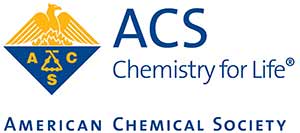Papers

This work, concerns determination of energy potentials of three types of food waste in the Ivory Coast. The method used consists in carrying out a physical and chemical analysis of three types of waste, namely cocoa shell, sugar cane bagasse and oil palm seed fibers. The study of five (5) parameters show the energy potential of the three wastes. This is made possible by the knowledge of dry volatile matter (%MVS greater than 97%), total organic carbon (% COT about 57%) and dry matter (%MS between 17% and 79%), ash content (%K between 2.65% and 11.4%) and humidity (%TH between 20% and 83%).
It appears from this study that these wastes have energy potentials with the lower calorific value (PCI greater than 18 MJ / kg). These data are very interesting and indicate that these wastes are recoverable by combustion or methanation. However, the humidity level is very high for two of them, notably cocoa shell and sugar cane bagasse (83% and 70% respectively). The difference between PCS and PCI shows that it will be necessary to pre-dry these wastes before combustion.

Relative viscosities of NaCl, KCl, KBr, RbCl, KI in 10% (W/W) 2-(Ethoxy) ethanol - water mixture are measured at 30o , 35o and 40oC. Joules-Dole equation is used to analyze the data to calculate B-coefficients. Transition state theory is applied to calculate Enthalpy activation of viscous flow ( H-20# ) and entropy of activation of viscous flow (
S20# ). The temperature coefficients of (
H20# ) , (
S2 0 #) and B-coefficients show that in the present solvent system Na+ is a structure making ion while K+. Rb+, Cl-, Br-, I- are structure breaking ions. An attempt is made to split the enthalpy and entropy values of the electrolytes into their ionic contributions. Solute-solvent interaction parameter (
) , solvation numbers and ionic volumes are also calculated. These values support the conclusions drawn from
H-20# and
S20# . Dimensions of the ions are calculated from the viscosity B-coefficients and are compared with Pauling’s crystal radius of the ions.


This work is licensed under a Creative Commons Attribution-NonCommercial-ShareAlike 4.0 International License











